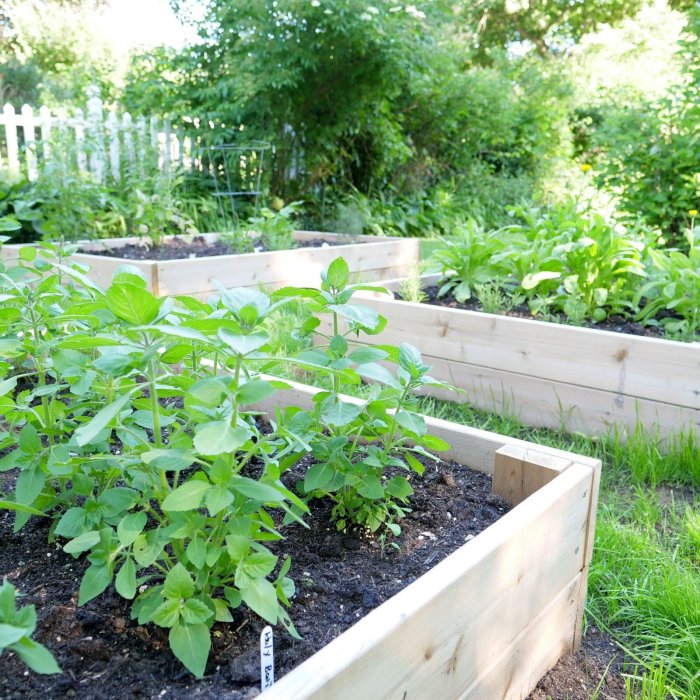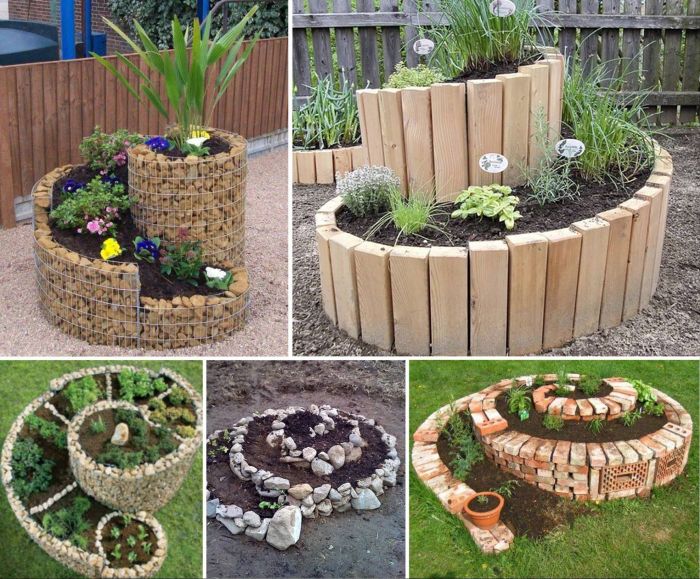DIY Herbal Garden: Imagine stepping into your own backyard, surrounded by the fragrant aroma of fresh herbs, ready to be plucked and used in your culinary creations or soothing herbal remedies. A DIY herbal garden isn’t just a beautiful addition to your landscape; it’s a rewarding and enjoyable experience that connects you to the earth and provides a constant source of natural goodness.
Table of Contents
From selecting the right herbs for your climate to learning the art of planting, caring for, and harvesting them, this guide will walk you through every step of creating your own thriving herbal garden. Whether you have a spacious yard or just a small balcony, you can cultivate a vibrant collection of herbs that will enhance your life in countless ways.
Using Your Herbs

You’ve nurtured your herb garden, and now it’s time to reap the rewards! There are countless ways to enjoy the bounty of your hard work, from flavoring your meals to crafting natural remedies and adding a touch of greenery to your home.
Using Herbs in Cooking
Fresh and dried herbs add depth and complexity to any dish.
- Fresh herbs offer the most intense flavor and aroma. Use them towards the end of cooking to preserve their delicate qualities.
- Dried herbs are more concentrated and can be used throughout the cooking process. They also have a longer shelf life.
Here are some examples of how to use herbs in cooking:
- Basil: Add fresh basil to tomato sauces, pesto, and salads. Dried basil is great for soups and stews.
- Rosemary: Use fresh rosemary sprigs to flavor roasted meats, vegetables, and soups. Dried rosemary can be added to bread dough or sprinkled over roasted potatoes.
- Thyme: Fresh thyme is excellent for chicken, fish, and vegetables. Dried thyme is a staple in French cuisine and can be used in stews, soups, and sauces.
- Oregano: Fresh oregano is a key ingredient in Italian cuisine, particularly pizza and pasta sauces. Dried oregano is used in Mediterranean dishes and marinades.
Resources and Inspiration: Diy Herbal Garden

Creating and maintaining a successful DIY herbal garden is a rewarding experience, but it can also be challenging. Luckily, there are plenty of resources available to help you along the way. From websites and books to organizations and online communities, you can find information on everything from identifying herbs to learning about their properties and finding gardening tips.
Websites and Books, Diy herbal garden
The internet is a treasure trove of information on herbal gardening. Many websites offer comprehensive guides on growing herbs, including planting, care, and harvesting techniques. Some websites also offer information on the medicinal properties of herbs and their uses in traditional medicine.
- The Herb Society of America: https://www.herbsociety.org/
- The American Herbalists Guild: https://www.americanherbalistsguild.com/
- The National Gardening Association: https://www.garden.org/
- The Royal Horticultural Society: https://www.rhs.org.uk/
In addition to websites, there are many books available on herbal gardening. These books offer in-depth information on a wide range of topics, from choosing the right herbs for your climate to creating your own herbal remedies.
- “The Herbalist’s Garden” by Michael Tierra
- “The Complete Book of Herbs” by Lesley Bremness
- “The Rodale Book of Herbs” by Editors of Rodale
- “The Encyclopedia of Herbs and Their Uses” by Deni Bown
Online Resources for Identifying Herbs
Identifying herbs correctly is crucial, especially if you plan to use them for medicinal purposes. Many online resources can help you identify herbs based on their physical characteristics, including their leaves, flowers, and stems.
- The Plant Identification App: This app allows you to take a picture of a plant and receive an identification based on its features.
- The USDA Plants Database: This database provides information on plants native to the United States, including their identification, distribution, and uses.
- The Missouri Botanical Garden Plant Finder: This website offers a comprehensive database of plants, including their identification, cultivation, and uses.
Learning About the Properties of Herbs
Once you’ve identified your herbs, you can learn about their properties and potential uses. Many websites and books offer detailed information on the medicinal and culinary uses of herbs.
- The Herb Society of America: This organization offers a wealth of information on the properties of herbs, including their history, uses, and safety precautions.
- The American Herbalists Guild: This organization provides resources on herbal medicine, including research, education, and advocacy.
- The National Center for Complementary and Integrative Health: This website offers information on the scientific evidence supporting the use of herbs for various health conditions.
Gardening Tips
Many online resources provide tips on planting, caring for, and harvesting herbs. These resources can help you create a thriving herbal garden, regardless of your experience level.
- The National Gardening Association: This organization offers a variety of gardening resources, including articles, videos, and forums.
- The Royal Horticultural Society: This organization provides information on a wide range of gardening topics, including growing herbs.
- Local gardening clubs and organizations: Many local communities have gardening clubs and organizations that offer workshops, seminars, and other resources for gardeners.
The journey of cultivating a DIY herbal garden is a fulfilling one, filled with the joy of nurturing nature’s bounty. From the initial planning stages to the satisfaction of harvesting your own fresh herbs, every step offers a sense of accomplishment and connection to the natural world. As you embark on this adventure, remember that the most rewarding gardens are those that reflect your individual style and preferences. So, let your creativity bloom, experiment with different herbs, and enjoy the many benefits of a DIY herbal garden that’s uniquely yours.
A DIY herbal garden is a rewarding project, offering fresh herbs for cooking and a touch of natural beauty. Just like tending to your plants, sometimes your car needs a little TLC too. If you’re in Boise and looking to tackle a car repair yourself, check out resources for DIY auto repair in Boise. Once you’ve got your car running smoothly, you can enjoy the fruits (or herbs) of your labor in your own little garden oasis.

